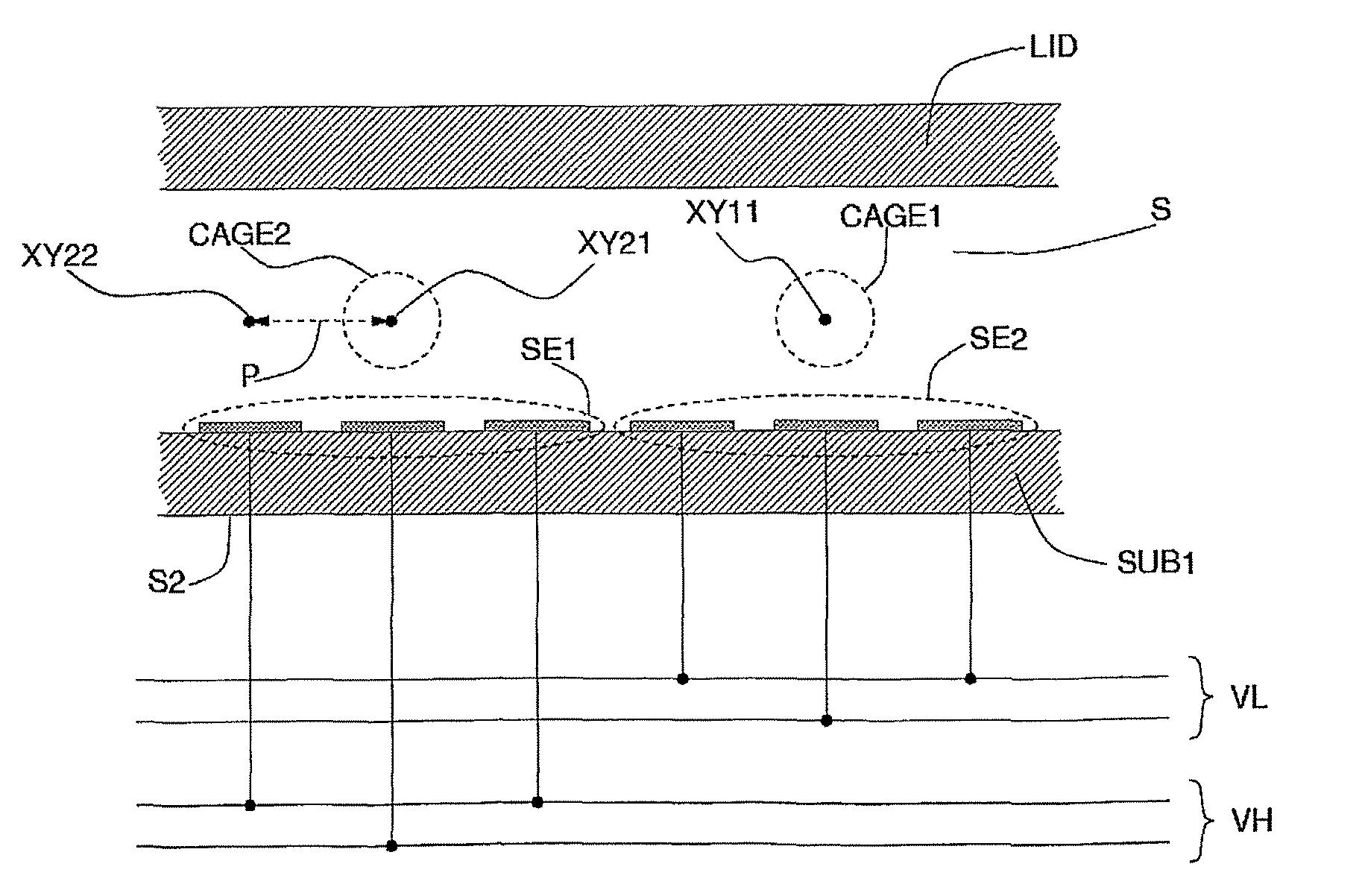Method and apparatus for the manipulation of particles in conductive solutions
a technology of conductive solutions and particles, applied in the direction of electrolysis components, material analysis by electric/magnetic means, solid separation, etc., can solve the problem of short time lysis of cells contained in specimens, and achieve the effect of short time lysis
- Summary
- Abstract
- Description
- Claims
- Application Information
AI Technical Summary
Benefits of technology
Problems solved by technology
Method used
Image
Examples
Embodiment Construction
[0008]In what follows, the term “particles” will be used to designate micrometric or nanometric entities, whether natural or artificial, such as cells, subcellular components, viruses, liposomes, niosomes, microbeads and nanobeads, or even smaller entities such as macro-molecules, proteins, DNA, RNA, etc., such as drops of unmixable liquid in the suspension medium, for example oil in water, or water in oil, or even drops of liquid in a gas (such as water in air) or droplets of gas in a liquid (such as air in water). The symbols VL or VH will moreover designate as a whole two different sets of signals, each containing the voltages in phase (Vphip) or phase opposition (Vphin) necessary for enabling actuation according to the known art.
BRIEF DESCRIPTION OF THE FIGURES
[0009]FIG. 1 shows the circuits for actuation and optical reading associated to each element of an array of microsites.
[0010]FIG. 2 shows a cross-sectional view of a generic device, generation of the field of force associa...
PUM
| Property | Measurement | Unit |
|---|---|---|
| distance | aaaaa | aaaaa |
| electric voltages | aaaaa | aaaaa |
| temperature | aaaaa | aaaaa |
Abstract
Description
Claims
Application Information
 Login to View More
Login to View More - R&D
- Intellectual Property
- Life Sciences
- Materials
- Tech Scout
- Unparalleled Data Quality
- Higher Quality Content
- 60% Fewer Hallucinations
Browse by: Latest US Patents, China's latest patents, Technical Efficacy Thesaurus, Application Domain, Technology Topic, Popular Technical Reports.
© 2025 PatSnap. All rights reserved.Legal|Privacy policy|Modern Slavery Act Transparency Statement|Sitemap|About US| Contact US: help@patsnap.com



